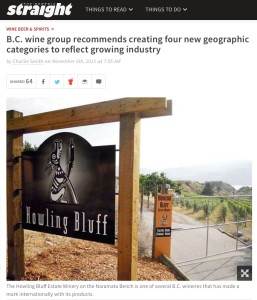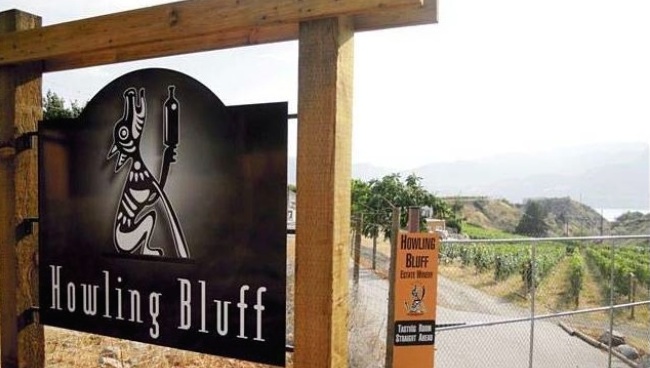Byline: Charlie Smith, The Georgia Straight
The province’s wine industry has reached a turning point, according to a new report that calls for significant changes in how B.C. products are identified.
The B.C. Wine Appellation Task Group’s seeks the establishment of four new wine regions: Thompson Valley, Lillooet-Lytton, Shuswap, and Kootenays.
That’s in addition to the five officially designated regions: Okanagan Valley, Similkameen Valley, Fraser Valley, Vancouver Island, and Gulf Islands.
The report has been submitted to the B.C. Wine Authority, which regulates the quality of B.C. wines.
It will hold an industry plebiscite before any of of the recommendations will be implemented.
The task group is chaired by Ezra Cipes of Summerhill Pyramid Winery and includes representatives of 14 other wineries and a Ministry of Agriculture employee.
The members also recommended the creation of 15 sub-appelations for the 140-kilometre-long Okanagan Valley.
The first was approved in 2014: the Golden Mile Bench near Oliver.
The Okanagan Valley has three climatic regions, according to the report. The task group recommended that wines using an approved sub-appelation must place this on the wine’s primary display panel.
 The task group also called for mandatory membership in the B.C. Wine Authority for winery licence producers making wine from 100 percent B.C.-grown grapes.
The task group also called for mandatory membership in the B.C. Wine Authority for winery licence producers making wine from 100 percent B.C.-grown grapes.
In addition, the task group wants the B.C. Wine Authority to be able to prevent the use of unapproved regional names for wines made only from B.C. grapes.
Another recommendation: the elimination of taste panels to assess faults of wines produced with 100 percent B.C.-grown grapes.
Existing accredited lab analysis should continue, the task group stated, to ensure that B.C. wines meet health, safety, and technical standards.
The members also called for retention of BC VQA “as the appelation of origin” for wines made entirely from B.C.-grown grapes.
BC VQA stands for the British Columbia Vintners Quality Alliance, which guarantees that a wine is entirely created from B.C. grapes.
In addition, the VQA designation guarantees that 95 percent of the grapes must come from the region identified on the label and 85 percent must be of the vintage listed and be of the stated varietal.
The report notes that the Canada-U.S. free trade agreement in the late 1980s led to the replacement of vines that had produced low-quality grapes for bulk wines.
Since then, the focus has been on producing higher quality B.C. wines that can compete internationally.
“So the BC wine industry may be considered ‘young’, but we take pleasure in the fact that our iconic terroir has come to represent the province as much as our mountains, forests, lakes and rugged coastline,” the report states. “Today, few would disagree that our wines are inexorably linked with the place known as British Columbia.”
